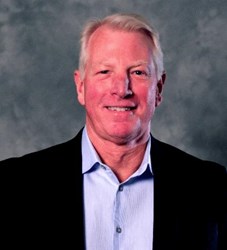Setting FHIR To The Clipboard At Hackensack University Medical Center

By Jerry Rankin, Industry Strategy Director for Clinical Interoperability, Infor
We’ve all been there, filling out that pre-visit questionnaire on the clipboard with the borrowed pen, scribbling to get the task over with only to have to repeat it at another location or visit. This time-consuming, error-prone, process gets repeated thousands of times in medical centers across the U.S. each and every day.
As a baby step on its journey to revolutionize the sharing of medical information among providers, researchers, and patients across the medical center, Hackensack University Medical Center (UMC) of Hackensack, NJ set out to leverage the emerging HL7 FHIR standard to remove clipboards from waiting rooms. This was part of a larger initiative to uphold the pledge made by Hackensack UMC to the White House to “provide individuals with access to their clinical data via open, standardized APIs, enabling connection with applications that allow patients to donate their data to support precision medicine research,” as part of the Precision Medicine Initiative.

To accomplish this, Hackensack UMC set out to create a common Health Level Seven International (HL7) Fast Healthcare Interoperability Resources (FHIR) standard service layer, where any system can interact and share data among partners and clinical research teams quickly and easily. This was in tandem with forging ahead to leverage mobile applications more broadly throughout the organization and empower patients to manage their own health data.
Laying A Foundation For FHIR Enablement
For the first step, Hackensack UMC’s strategy was to create a simple-to-use, mobile system for patients to schedule appointments and provide information via a single health questionnaire, decreasing waiting room time, increasing patient satisfaction, and allowing for more face time between patients and providers.
Hackensack partnered with the Infor Cloverleaf Integration Suite team to build a web service interface layer that allowed the mobile application to interact with Epic and streamline the questionnaire itself —tailoring it to and enabling the patient to simply confirm the information and deliver its data back to EPIC leveraging FHIR and proprietary integration.

Baby Step With A Huge Impact
It sounds simple, but impact was huge. Hackensack had nearly 450,000 outpatient visits in 2015. With the combination of the mobile application and web services foundation laid down with Cloverleaf, the hospital estimates in excess of 65,000 hours were saved in manual data entry of paper based questionnaires. The innovation also resulted in a reduction on average of three minutes per patient spent in waiting rooms, and an increase in provider productivity (able to see one additional patient per hour).
Brian Benson, manager of enterprise systems, along with Modi Boutrs, team leader for enterprise development at Hackensack UMC said about their vision, “We took the pledge from the White House to help gear towards precision medicine and interoperability. We’ve taken a stand with to enable our environment and our EHR to help us meet the HL7®FHIR® standard. Our main goal was to empower the patient so they can take care of their personal health data. We believe that the HL7® FHIR® will allow us to reach this goal faster than any other technology.” Hackensack has made major strides toward achieving this vision of delivering precision medicine, and plans to continue to innovate to fulfill its commitment to the White House.
Hackensack UMC Continues With FHIR And Innovation
In related efforts, Hackensack is leveraging this web service interface layer to enable patients to use a mobile scheduling application. Patients can schedule appointments at any time day or night with this application, allowing patients to avoid the need to research doctors, call the doctor’s office during office hours, and to insure that insurance is accepted. This simple but powerful tool lets patients make appointments in one minute, five to 10 times faster than in the previous phone based system.
About The Author
Jerry Rankin is Industry Strategy Director for Clinical Interoperability for Infor. Jerry is a veteran of the Interoperability and Health Information Exchange domain, having worked in the product management and strategy arena for companies such as WebMD, CareScience, Quovadx, Healthvision, Lawson, and Orion Health.
